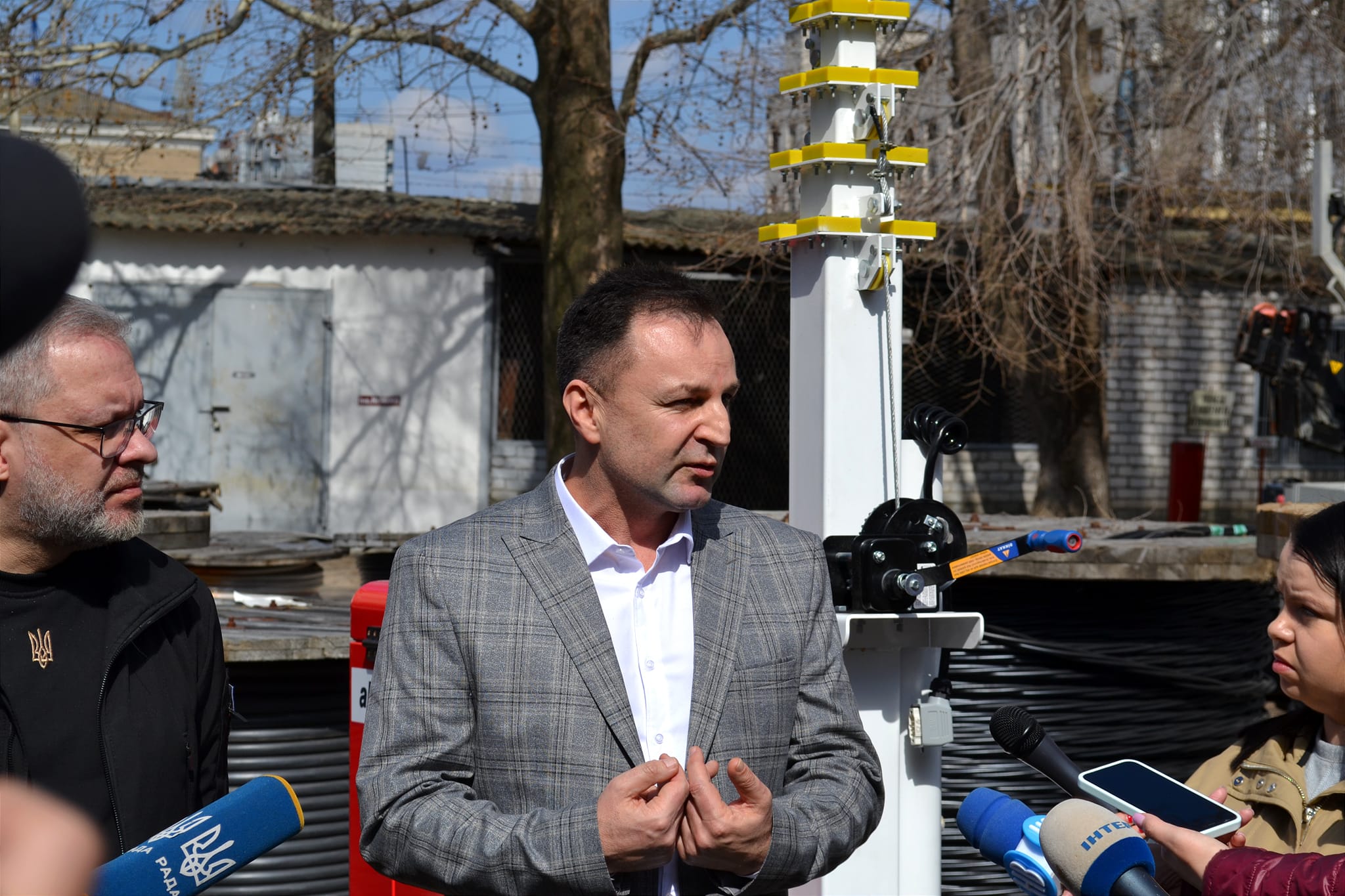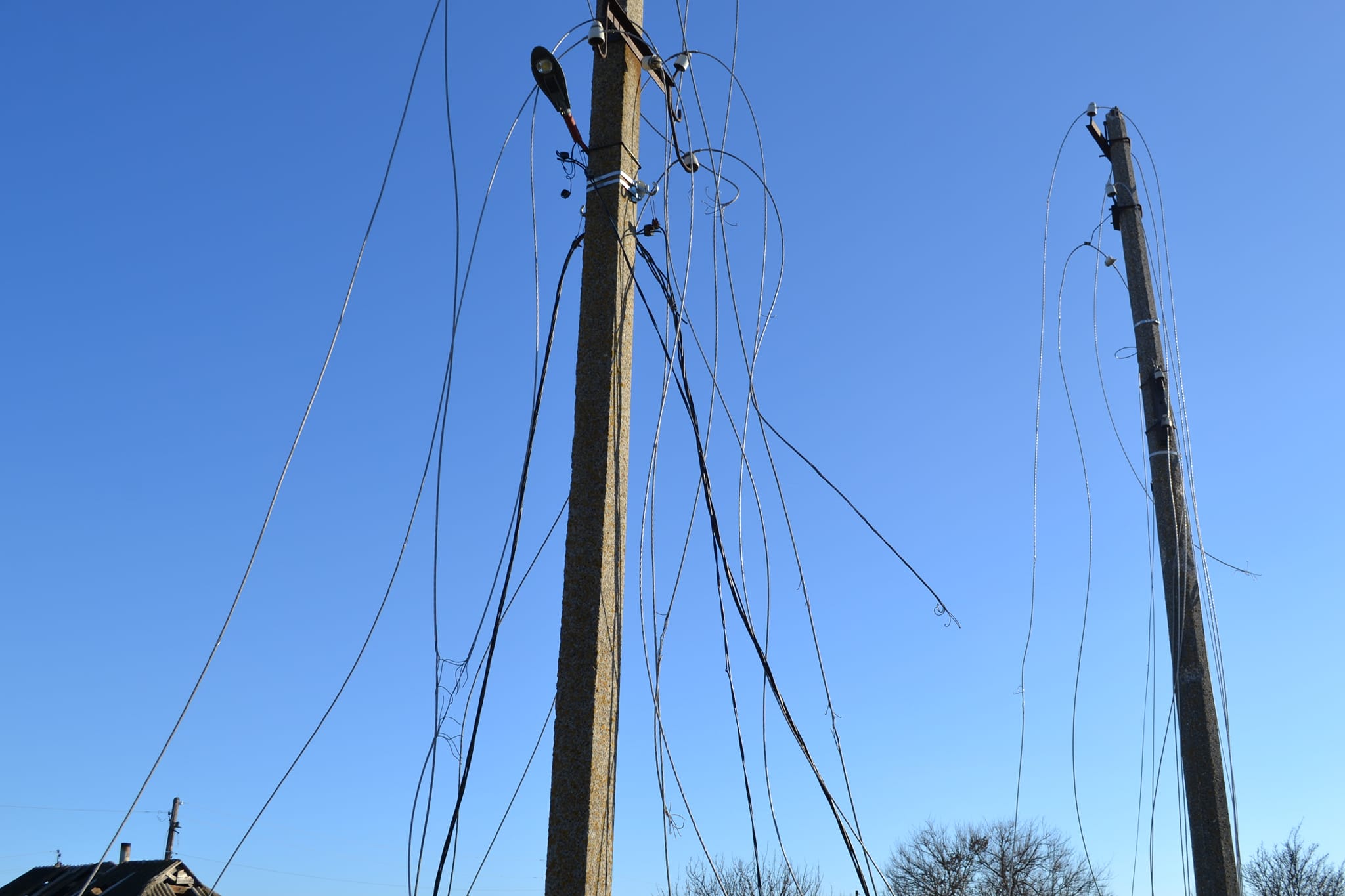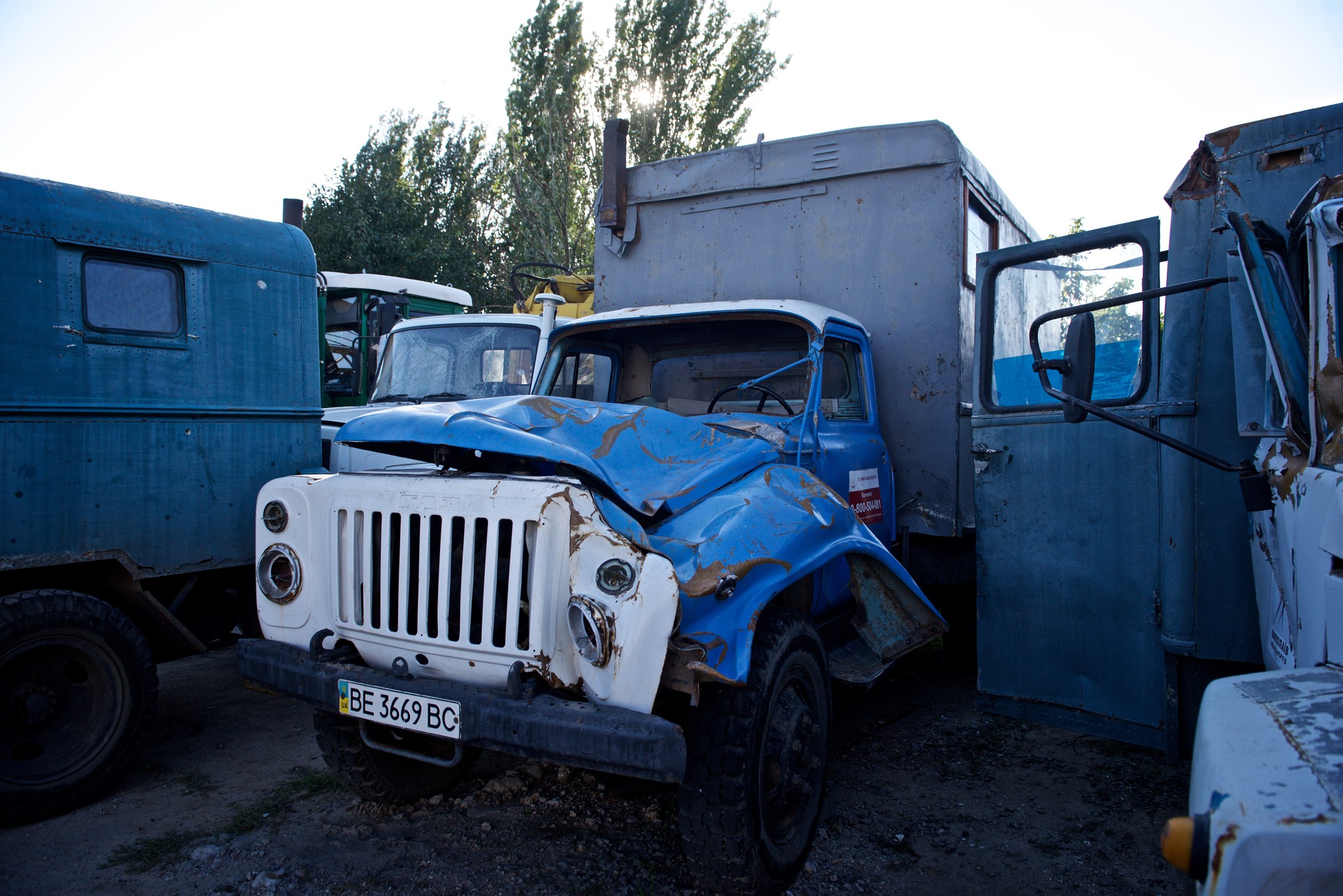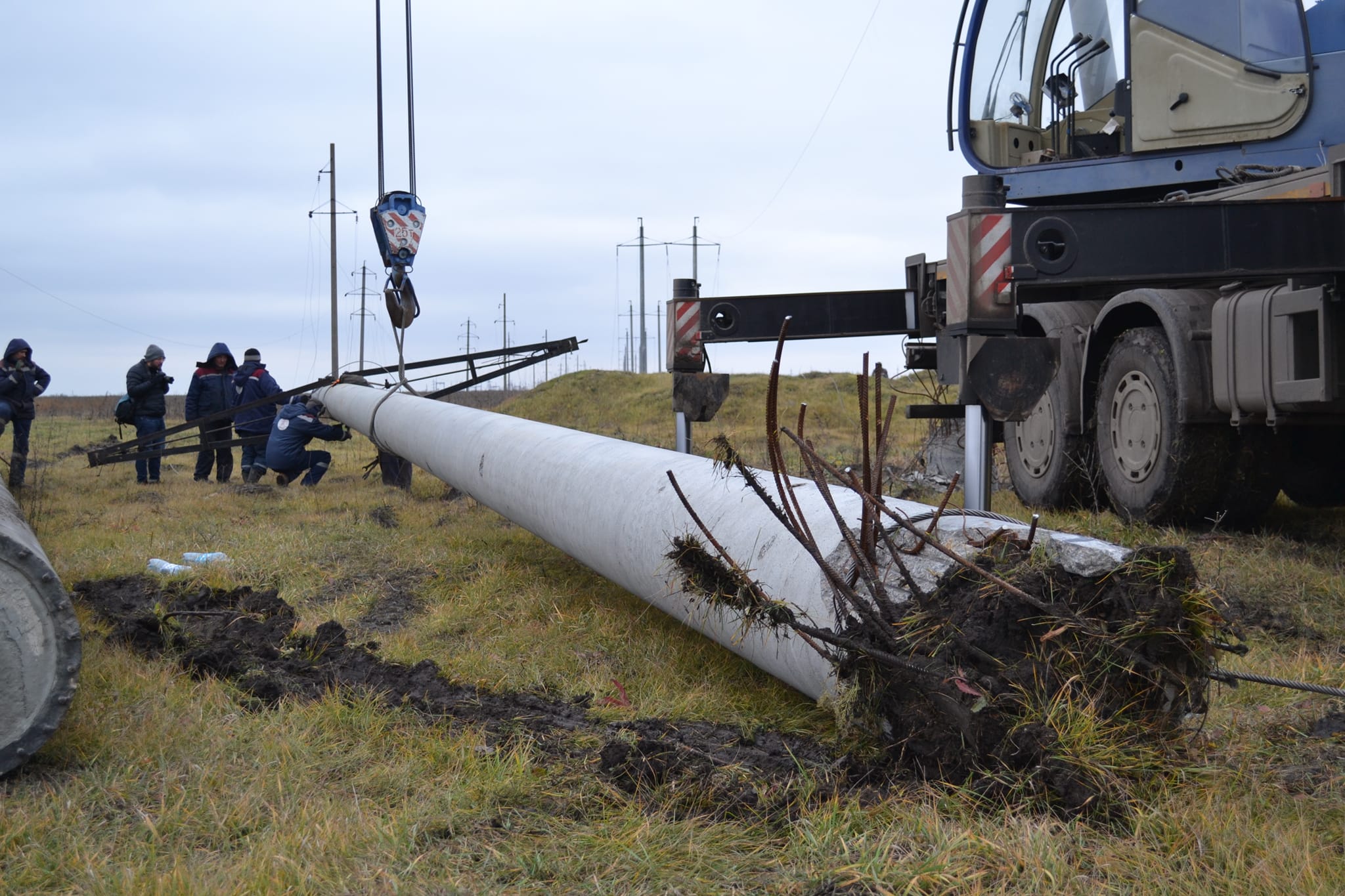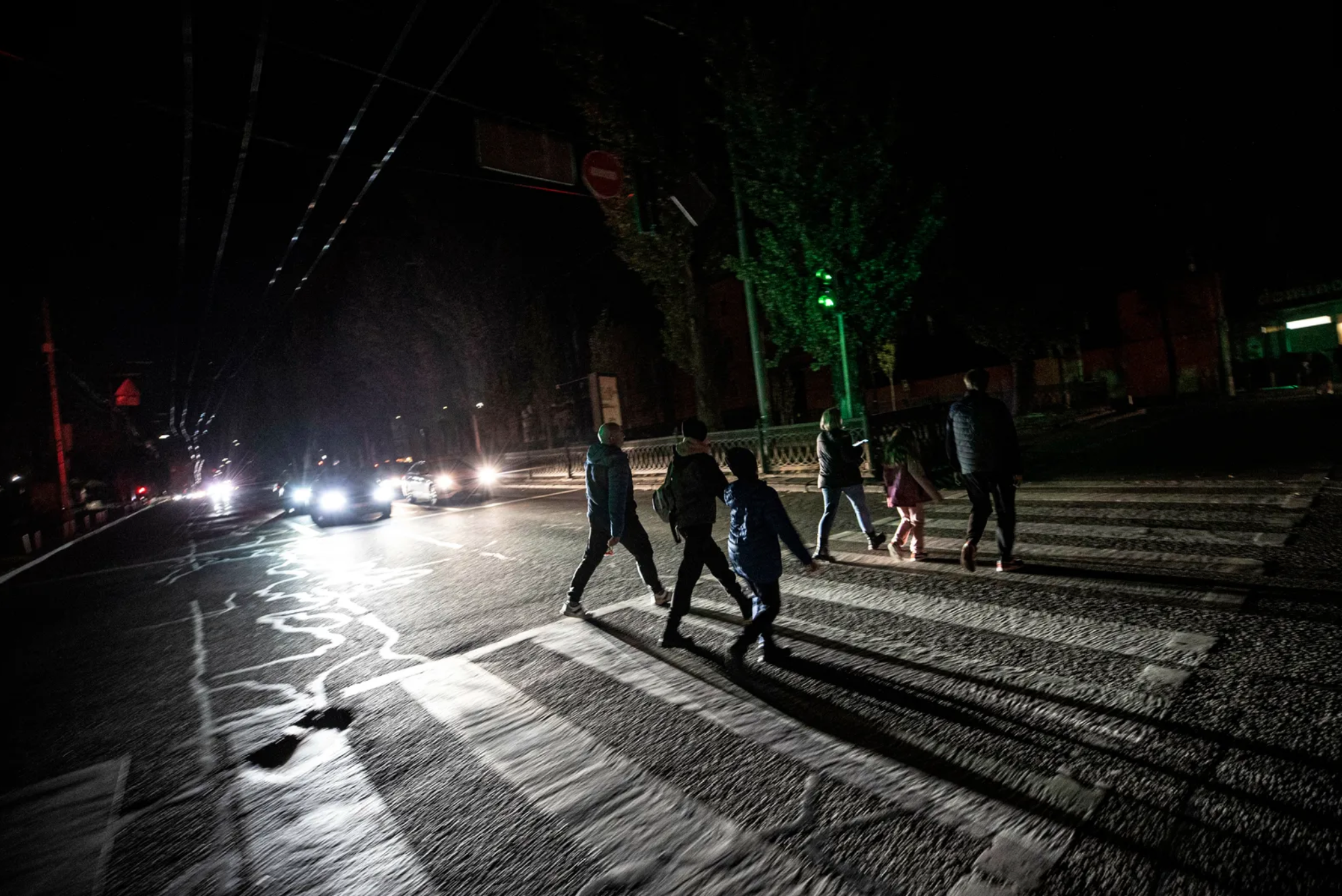«Mykolaiv will not be left without light». Interview with Oblenerho director Vadym Danylkiv
- News of Mykolaiv
-
•
-

- Yuliia Boichenko
-
•
-
9:50, 02 November, 2023
Since the beginning of the full-scale invasion, Mykolaivoblenerho has held the energy front. Even during the biggest Russian attacks on the power grids of the region, the company was able to supply light to the homes of Mykolaiv residents.
NikVesti spoke with the acting director of Mykolaivoblenerho Vadym Danylkiv and learned about the company's plans to rebuild damaged power grids in the region, readiness for possible Russian attacks this winter, as well as modernization of the region's energy infrastructure to EU standards.
«WE HAVE A PROJECT TO RESTORE OUR NETWORKS FOR 240 THOUSAND EUROS»
— What percentage is the number of power lines damaged by the enemy compared to their entire length in the Mykolaiv region?
— The question is not the number of damaged lines or the amount of equipment, but really the scale. There are power lines whose scale of damage is not significant, but there are power transmission lines in the combat zone near Mykolaiv or in the de-occupied Snihurivka — there the level of destruction is 80%, they are actually not there. What we restored there is a conditional restoration so that there is light in the houses.
— Are there donors who are ready to restore the damaged power grids that you are talking about?
— In fact, we actively communicate with them all the time, but many donors want to see concrete, integral projects where they can invest money and see the result. We are currently talking to Swiss firms that also want to restore some part of the damaged networks. We have now developed a network restoration project, their development plan — it was financed by the Lithuanian government for 240,000 euros. These are only project works. We want to create working projects with which we can directly appeal to donors to restore networks. We have not stopped, we are working. We were actually helped by the European Energy Support Fund. In the near future, large transformers that have been manufactured for more than 6-8 months will arrive. This is a project to transition networks that were destroyed near Mykolaiv to a different voltage class — similar to the one that exists in most European countries. That is, the European voltage class is 20/04.
What it means? That we use different types of equipment. That is, the Ukrainian transformer is not the same as the European one. Typical for us transformers helped to replace Lithuania, Estonia, Latvia, partly Bulgaria. One of the decisions to switch to another voltage class was the possibility of receiving help from other European countries. In fact, we have already received 200 transformers from the European Union, many of which are used. But this would not be possible if we did not plan to switch to the voltage class used in Europe. It helps to reduce technological losses of electricity. In addition, we do not waste our consumers' money, nor our own — European countries are helping us with the recovery. We are very actively communicating with various countries and looking for help for specific objects.
— Are we talking about projects that will be implemented during the great war or about projects that will be implemented after the victory?
— In fact, these are huge sums of money. This is billions in damages. We understand that the replacement value of these objects amounts to tens or even hundreds of billions of hryvnias. 12 billion hryvnias is what we estimate beforehand. But even this amount does not take into account the fact that networks must be automated. That is, no one will put poles in the places where they were, because automation of the networks will take place — that is, their complete reconstruction. Accordingly, this is the creation of new dispatch centers, updating of special equipment.
«I HOPE WE WILL RECEIVE NEW EQUIPMENT NEXT YEAR. THIS IS A HUGE PROBLEM»
— That is, there is no talk of restoration plans only to the level of pre-war times?
— In fact, recovery to the level it was before the war will never happen. In many places, it is completely impractical to do this. If we are talking about Sniguriv region or the vicinity of Mykolaiv, where there were very active hostilities, then the level of destruction there is actually 80%. Everything is destroyed there and there are no consumers. Many industrial enterprises have left and are unlikely to ever return. These are other types, levels and points of consumption. That is why we are building a new network there: it is a new voltage class 20/04, new technologies. That is, we are rebuilding. Will it be after the war? No, we already do that.
In the near future, a new transformer should arrive and we will start rebuilding the network on class 20/04. This cannot be done in one or two days. Because, for example, the production time of one transformer is more than 8 months. These purchases are financed from the support fund of Ukraine and USA projects.
But, in fact, not only transformers were damaged or destroyed, but also power lines, supports, wires, and cables. Few people understand what damaged energy facilities mean. It's just completely destroyed critical substations, it's destroyed expensive equipment. Conditionally, the cost of one is more than 1 million hryvnias, and quite a lot of them have been destroyed in our region. But we have already received 60 units as aid.
— How many percent of damaged or destroyed energy facilities have already been restored thanks to international partners?
— Look, we wouldn't have restored anything if it weren't for international organizations. In fact, many people have left Mykolaiv and there are no consumers. For example, the level of electricity consumption by an industrial enterprise of the first voltage class fell five times. That is, in fact, our company did not have the opportunity to exist. The only thing for which there was enough money in 2022 was for wages to employees and some fuel and lubricants. Everything else: a large amount of equipment, wires, transformers, various materials — they were given to us as humanitarian aid. The level of aid from European countries is huge. We were partially helped, of course, by others: Macedonia, Georgia, Japan. Today, they are looking closely at our facilities. For example, the Japanese aid agency JICA is also considering the idea of providing us with special equipment. Few people want to help with this. We received one tower from USAID. Our equipment is simply destroyed and the crews have nothing to work on. This is a huge problem and we are not very willing to help here. I hope that next year we will be able to renew a large number of special equipment and get a new one.
The appearance of a car tower with a lifting height of 34 meters was very important for us. It is not new, but Denmark helped us with this tower. They repaired it, updated it, and now it is in practically new condition. When there were hostilities in the territory of the region, there was no tower of such height, and we simply could not fix the networks, because there was nothing to stand on. The only thing we need is a lot of special equipment.
«CONFIDENT THAT THE ENEMY IS PREPARING TO CONTINUE FIRING»
— Did the company manage to restore the networks damaged by shelling last winter? What is their condition today?
— In many cases, we have the opportunity to distribute electric energy through these (damaged, note) networks, but if we talk about restoration, it is still far from the level to which we strive. When we talk simply about the repair of a support with wires, then in many cases it is a wire that is twisted in three places, which, of course, is losses and not such reliability.
After the end of the war, after the victory, we will be forced to change these lines in many cases completely. But if we are talking about reconstruction during the war, then we are already doing this work. Where we install something new, we will rework destroyed or damaged networks. We are not waiting for completion.
For example, in the villages. We are now proposing to the Swiss to restore the distribution networks of the two settlements, at least partially. We received insulated wires and supports from them, and we will change them at our own expense. This is such a comprehensive approach. We want to show: here is a settlement, it is currently restored, but it is in such a terrible state, help us with materials and we will show you this settlement after a while in a different state. After all, today we have settlements to which 10-15% of the population has returned, and we must provide reliable electricity supply there. It is more about social responsibility.
— How ready is the energy infrastructure of the Mykolaiv region for possible new Russian attacks?
— In fact, we experienced shelling last year as well. Especially in Mykolaiv Oblast, this started to happen much earlier than in other regions. Our objects were targeted from the very beginning of hostilities. That is, we are used to working in a mode where our facilities are constantly under threat.
In fact, our general energy system is reliable. We have many backup power systems. I don't know if every country would be able to withstand such attacks. In the Mykolayiv region, even after serious shelling, we were practically always with light.
The war is taking place on two fronts: the energy front can be taken not only in quotation marks. It is not the army that is fighting against us, it is the engineers who are fighting against us — the same energy workers as we are. The only thing: the profiles have changed. If the main task of any power engineer is to provide light, then the Russian occupying power engineer is to deprive people of light. In fact, they hit exactly where they think hitting will leave the maximum number of people without power. And our task is to do everything so that they do not succeed.
We had a lot of damaged equipment, a lot of hits, but most of the time people didn't feel it. I'm sure the enemy is preparing to continue their shelling and blackout the region, but I'm sure we'll manage just the same. We also know that our Air Defense Forces and our army stand to protect the energy sector. In particular, we have prepared many surprises for our enemy, that even after breaking certain equipment, he will not achieve the effect he hopes for.
«WE HAVE BACK-UP WAYS OF ELECTRICITY SUPPLY»
— When we say that the enterprise is prepared for possible enemy attacks, what exactly is meant?
— For example, when I talk about large transformers, this is the equipment that takes a very long time to manufacture — from six months or longer. That is, the enemy knows that if he damages such large transformers, it will take time to replace them. Even if it is available, it is not so easy to replace it. It will take a week or more.
We, thank God, drove the Russian troops beyond the Dnipro and today we are not damaged by the same S-300s, except for Ochakiv. This is significant for Ochakiv and the Kutsurub community. Shelling continues there — the situation has actually not changed. Of course, we will not do any restoration there yet. We will not put anything new there until we de-occupy the Kinburn Spit. However, there are stocks of materials there.
But what is the reliability of the system? There are reserves. That is, there are backup voltage supply paths to any point. If the Russians fire at one voltage transmission path, we can supply voltage to that point in other ways. This is the reliability of the system, that it is ringed.
— Should the people of Mykolaiv expect a blackout in the region? What are your predictions?
— The readiness of the region is related to the actions of the enemy. That is, if we are talking about Ochakiv or Kutsurub communities, then, of course, the probability that people will be without electricity is higher there. Because there is a direct threat, direct shelling, direct destruction. Of course, we will be able to restore it, but the duration of the break may be longer (compared to other communities of the region, note).
In Mykolaiv, we are preparing for any scenarios, even the worst. But I am sure that we will cope with this and even at the most critical time the city will not be left without electricity. For some short period? Yes, maybe. For a long time — no, because we are ready now with other means.
— That is, there is currently no appeal to the residents of Mykolaiv to prepare for a blackout, as was the case last winter?
— We may be without electricity for one day, two days without electricity, but I am sure that we will manage. Even under very heavy fire I'm sure we'll apply the voltage very quickly.
— Last winter, the blackout situation in the region was somewhat better compared to other regions of Ukraine. This is primarily due to the fact that most people then had to leave the region, and local businesses were temporarily closed. What is the situation with electricity consumption expected this winter?
— Of course, then the situation was worse for Odessa, because people from Mykolaiv, among others, went to Odessa. If at that time there was 20% of the population in Mykolaiv, today, let's say, 80% of the population and more have returned here. That is, people have returned. But, again, we have a dubious advantage, because our industry has not returned. When we talk about large industry, we currently have 20% of the pre-war time on the first voltage class. In this case, yes, we need a little less electricity than we did before the war.
On the other hand, you understand, we have a single energy system. When there is not enough electricity in the system as a whole, which is not directly related to damage to networks in the region, then here it is completely different. If we talk about what happened in Odesa, then the equipment on the territory of the city, which provided Odesa itself, was damaged, and there it was already necessary to transfer energy by alternative ways. This did not happen to us. But the deficit in general is the same whether it is Odesa, or Kirovohrad, or the Mykolaiv region. We all experience shortages in the same energy system in about the same way.
OUTAGE SCHEDULES AFFECT EVERYONE
— Is Mykolaivoblenerho working on the shutdown schedule today? Is there an understanding of how many hours a day Mykolaiv residents will and will not have light?
— Of course we are working on schedules. They are designed, they are ready. Simply, unlike many of our colleagues, we did not publish them ahead of time only for the reason that it would not be perceived as if: Mykolaivoblenerho predicts that from tomorrow we will be without electricity and with schedules. We are ready, schedules are agreed. I will tell you that we have a slightly different situation than in many regions of Ukraine. Almost all objects fall into our outage schedules. We are talking about the fact that the schedules are made in such a way that, according to them, our branches also remain without light. These graphs also include many objects of critical infrastructure, which in many regions are discarded. But it also leads to injustice. You understand that I cannot leave the light supply to our branch, which is of course important, because at the same time the lights will never be turned off in 20, 40, 100, 150 houses. Our people don't like it, the worst thing is: «why does my neighbor have light, but I don't?». In fact, we will provide light to critical infrastructure only if we do not have too many houses burning at the same time.
We will try to distribute as fairly as possible. Now, we probably made the schedules a little more difficult for people, because instead of just three queues, we made three more sub-queues in each queue. We did this solely in order to be able to alternate consumers, if we do not need to save electricity for a whole queue. Accordingly, if necessary, we will alternate as follows: if the first sub-queue was without light for one day, and the next we have the opportunity to turn off only one sub-queue, then it will be the second, on the third — the third. We will not disconnect everyone for the sake of the company. But it all depends on the shelling. We are not planning any queues or shutdowns for today.
Our schedules are designed as follows: two hours without light, four hours with light. But out of these four hours, in critical cases, there can be two hours, let's say, «perhaps without light». That is, the schedule may vary depending on the complexity of the situation.
Yuliia Boichenko, «NikVesti»


